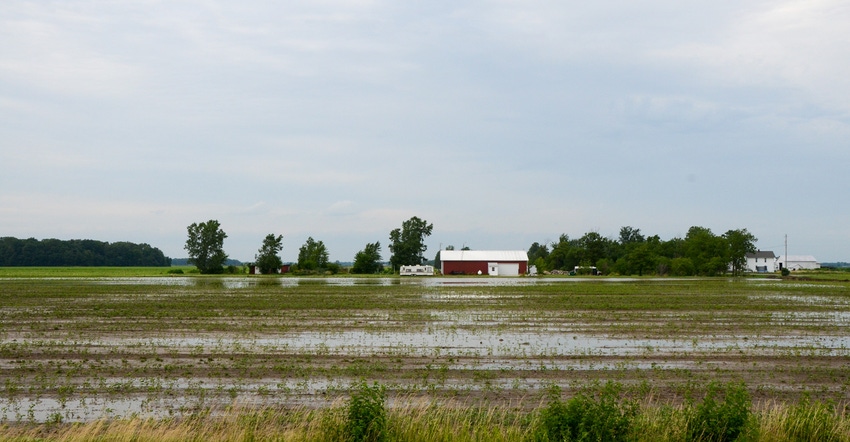March 31, 2020

Rain creates mud, and mud creates angst for farmers kept from doing what they value most: getting out in the fields.
2019 ended what was the wettest decade in Ohio on record. This winter has not been as wet as the last one, but it has been warmer. This means the ground has not been frozen for long, leaving fields saturated. And this spring is projected to bring above-average rainfall to Ohio, which will bring on more mud.
And mud is not simply a gooey mess for the animals and people who trudge through it. Mud can keep farmers from planting and harvesting, lower crop yields, put livestock at higher risk for some diseases and make it tougher for livestock to gain weight.
Drive on wet soil with heavy equipment — such as a planter or harvester — and the pore space between the soil particles becomes compressed, leaving the soil less able to support crop growth.
The mud from Ohio’s plentiful rain has led to 10 fewer days when it’s suitable to work in farm fields — taking five days from April, when planting typically occurs, and five from October, the typical harvest period.
“That’s more than a week’s worth of work — time that’s no longer available,” says Chris Zoller, an educator with Ohio State University Extension. “It squeezes the time you have in the spring, when you have to plant, and in the fall, when you have to harvest.”
Farmers certainly found that out last year. In 2019, rain led to an unprecedented number of acres that never could be planted. This spring is projected to also bring above-average rainfall, which might bring similar challenges for farmers.
Trudging through the mud is hard work. Cattle, pigs and other livestock burn more calories stepping through mud and staying warm when cold mud sticks to them. And burning more calories means they weigh less when they go to slaughter, so cattle often have to be fed food that’s higher in nutrients if they are dealing with a lot of mud.
Cold preferable to mud
“Cattle can handle cold weather better than mud,” says Stephen Boyles, cattle specialist with the OSU College of Food, Agricultural, and Environmental Sciences (CFAES). “We complain about cold temperatures — but there can be some benefits, because then, at least, the ground is frozen.”
Weight gain for beef cattle in mud becomes even tougher. Shin-deep in mud, cattle experience a 14% decline in their ability to take on weight. If the mud is up to their bellies, there’s a 35% decline, federal statistics show. Out on the pasture and sometimes in the feeding areas, ruts and reseeding are often necessary.
Laying down concrete in a feeding area, or creating a slope in that area so rainwater rolls off can help, Boyles advises.
“If not, about all you can do is reseed and level the feeding area,” he adds. “Admittedly, I have not found a perfect answer.”
Winters in Ohio have gradually been warming — and are doing so quicker than summers are — and this winter, the ground hardly stayed frozen at all.
“Typically, we would still see soil temperatures close to freezing,” says Aaron Wilson, climate specialist with CFAES. “We just haven’t had much of that overall. It’s been too warm for that to happen.”
Given the ground is saturated in much of Ohio, and the forecast is for a rainier-than-average spring, Wilson advises farmers to take advantage of any day that’s suitable for fieldwork.
“I tell them, ‘Be prepared and ready to roll when you get those windows to plant in the spring. Don’t take them for granted.’”
DeMartini is the technical editor for OSU CFAES.
Source: OSUE, which is solely responsible for the information provided and is wholly owned by the source. Informa Business Media and all its subsidiaries are not responsible for any of the content contained in this information asset.
You May Also Like




